The DOE Isotope Program (DOE IP), and its predecessor organizations, has been at the forefront of the development and production of radioactive and stable isotopes that are used worldwide. The Program supplies isotopes and related services to the Nation under the Atomic Energy Act of 1954 and has the sole authority within DOE to produce isotopes for sale and distribution.
The DOE IP produces critical radioactive and stable isotopes in short supply for the nation or that no domestic entity has the infrastructure or core competency to produce. The Program is typically the only, or one of few, global producers for these novel isotopes. Isotopes are high-priority commodities of strategic importance for the nation and are essential in medical diagnosis and treatment, discovery science, national security, industrial processes and manufacturing, space exploration and communications, biology, archeology, quantum science and other fields. Isotopes can directly enable emerging technology, and contribute to the economic, technical and scientific strength of the United States.
The mission of the DOE IP is to:
The DOE IP utilizes particle accelerators, nuclear reactors, enrichment technologies, and radiochemical processing capabilities throughout the national laboratory complex and at universities that it stewards, or leverages capabilities stewarded by other federal programs or academic institutions to most cost effectively utilize national capabilities to meet the requirements of the nation in isotope demand. The DOE IP works closely with U.S. industry to ensure availability of adequate, high quality isotope supply for continued stability and planned growth and facilitates commercialization of isotope production to the domestic private sector.
The DOE IP supports world-leading research and development (R&D) associated with creating novel and more efficient isotope production and processing techniques. The R&D activities provide collateral benefits for training, workforce development, and promotion of a future U.S.-based expertise relevant to nuclear energy, accelerator science, nuclear engineering, nuclear physics, isotope enrichment, and nuclear chemistry and radiochemistry. These disciplines are foundational, not only to isotope production and processing, but underpin many critical aspects of basic and applied nuclear and radiochemical science.
The DOE IP manages federal inventories of key isotopes, such as helium-3 for cryogenics and other applications, and the National Stable Isotope Repository. The latter consists of enriched stable isotopes created by calutrons (electromagnetic ion separation) that were developed as part of the Manhattan Project, the calutrons ceased operations in 1998. The U.S. inventory of stable isotopes is limited or has even been depleted in some cases, causing the U.S. to be dependent on foreign sources for certain stable isotopes. The DOE IP has developed and implemented modern stable isotope enrichment capabilities to replenish supplies housed in the National Stable Isotope Repository and promote U.S. independence from foreign supply. The DOE IP also considers DOE-owned legacy waste or inventories and extracts isotopes of interest to re-purpose unwanted or excess materials.
The National Isotope Development Center (NIDC) is located at Oak Ridge National Laboratory (ORNL) and is responsible for the day-to-day business operations of the Program, including sales, contract negotiation, marketing assessment, public outreach, quality control, and packaging and transportation.
Some examples of produced isotopes are:
- actinium-225, actinium-227, tungsten-188, lutetium-177, strontium-89, strontium-90, and cobalt-60 for cancer therapy;
- americium-241 and californium-252 for oil/gas exploration and production well logging;
- bismuth-213, lead-212, astatine-211, copper-67, thorium-227, and radium-223 for cancer and infectious disease therapy and research;
- cadmium-109 for X-ray fluorescence imaging and environmental research;
- berkelium-249, americium-243, plutonium-242, californium-251, einsteinium-255, and curium-248 for use as targets for discovery of new super heavy elements;
- fermium-257 for heavy element chemistry research;
- selenium-75 for industrial radiography;
- nickel-63 for explosives detection;
- lithium-6 and helium-3 for neutron detectors for homeland security applications;
- promethium-147 for nuclear batteries; and
- arsenic-73, iron-52, and zinc-65 as tracers in metabolic studies.
It can take decades for an economically and technically viable commercial market to be formed for any novel isotope. The DOE IP works closely with industry to commercialize technology and promote domestic independent producers in a smooth transition that does not disrupt supply and or prohibit research; at that point, the DOE IP stops production so as to not compete with the domestic industry.
While the DOE IP is not responsible for the production of molybdenum-99 (Mo-99), the most widely used isotope in diagnostic medical imaging in the Nation, it works closely with NNSA, the lead entity responsible for domestic Mo-99 production, offering technical and management support. The DOE IP is also not responsible for plutonium-238 production (which is under the Office of Nuclear Energy), or special nuclear material produced for NNSA defense program purposes.
Learn more about the Department of Energy Isotope R&D and Production mission.
IP Science Highlights
-
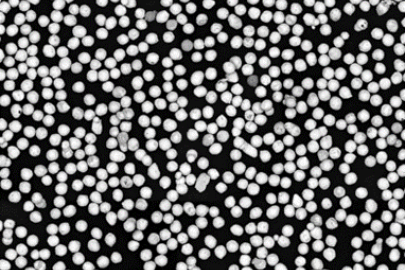 Free-flowing metal powders offer improvements for additive manufacturing, isotope production target fabrication, and more.
Free-flowing metal powders offer improvements for additive manufacturing, isotope production target fabrication, and more. -
 Researchers develop a framework to predict subcooled flow boiling and critical heat flux.
Researchers develop a framework to predict subcooled flow boiling and critical heat flux. -
 Researchers used single crystal X-ray diffraction to learn about the structure and bonding of a highly radioactive radium compound.
Researchers used single crystal X-ray diffraction to learn about the structure and bonding of a highly radioactive radium compound. -
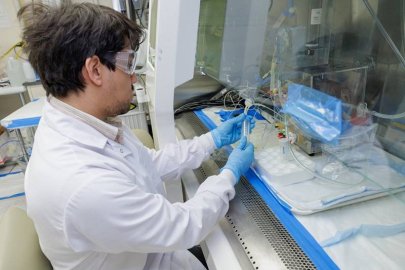 Researchers gain new insights into how the isotope astatine-211 interacts with resins commonly used to purify the isotope for therapeutic use.
Researchers gain new insights into how the isotope astatine-211 interacts with resins commonly used to purify the isotope for therapeutic use. -
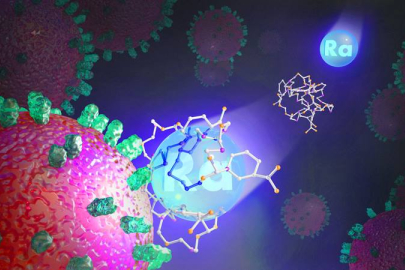 Understanding radium’s chemistry increases the likelihood of using it for targeted alpha therapy in soft tissue.
Understanding radium’s chemistry increases the likelihood of using it for targeted alpha therapy in soft tissue. -
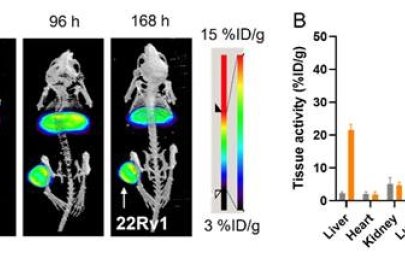 Researchers advance the use of cerium/lanthanum-134 for medical scans in actinium-225 cancer therapy.
Researchers advance the use of cerium/lanthanum-134 for medical scans in actinium-225 cancer therapy. -
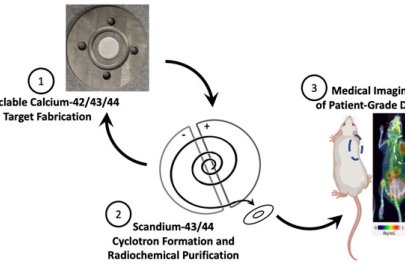 Hard to produce in quantities and purities appropriate for human use, scandium radioisotopes have potential for imaging cancer.
Hard to produce in quantities and purities appropriate for human use, scandium radioisotopes have potential for imaging cancer. -
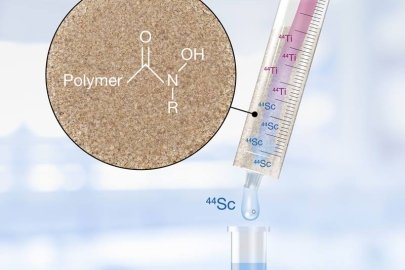 An easy-to-use system can increase the availability of PET imaging agents to more patients.
An easy-to-use system can increase the availability of PET imaging agents to more patients. -
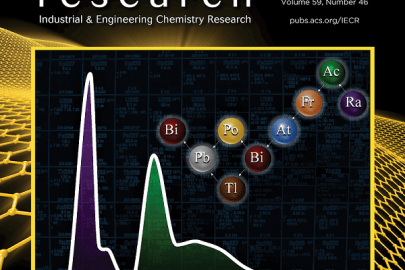 Research advances the chemistry and improves the purity of isotopes for targeted alpha therapy used in the treatment of cancers.
Research advances the chemistry and improves the purity of isotopes for targeted alpha therapy used in the treatment of cancers. -
 Scientists can tune the strength of astatine-211 bonds with chemicals called ketones, laying the groundwork for a new class of radiopharmaceuticals.
Scientists can tune the strength of astatine-211 bonds with chemicals called ketones, laying the groundwork for a new class of radiopharmaceuticals.
IP Resources
Contact Information
Office of Isotope R&D and Production
U.S. Department of Energy
Germantown Building
1000 Independence Ave., SW
Washington, DC 20585
P: (301) 903-3400
E: [email protected]


